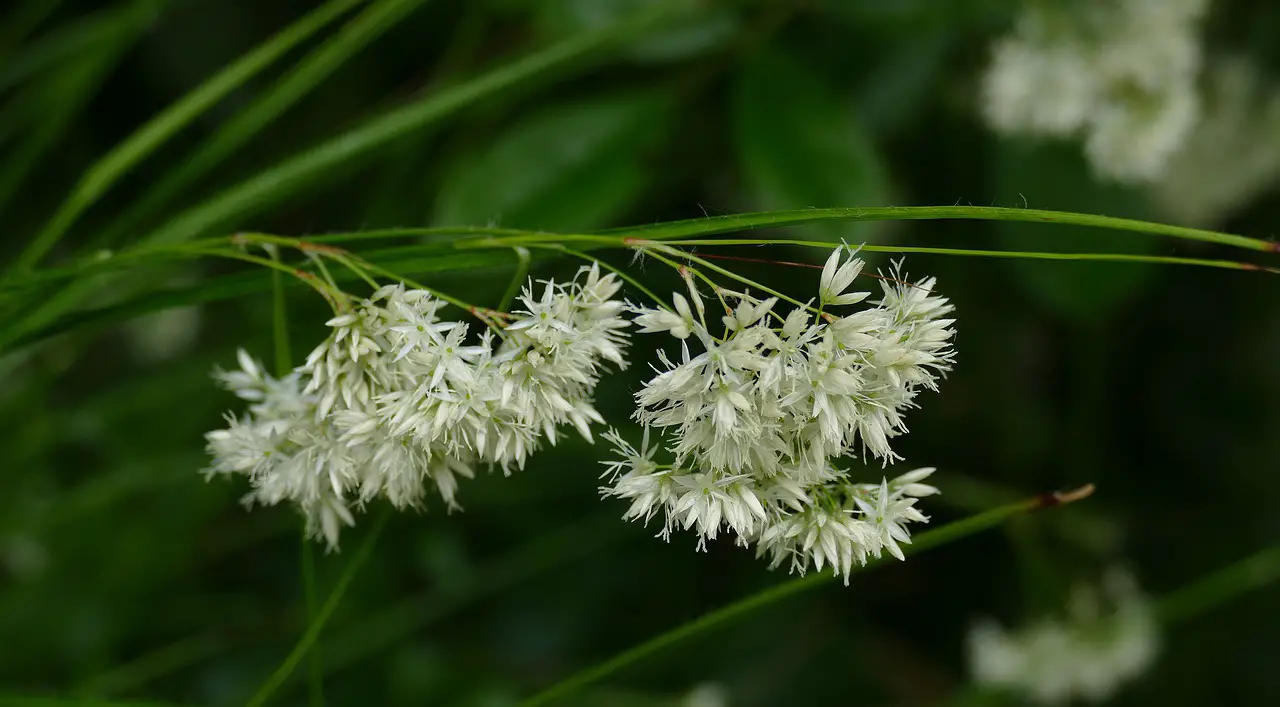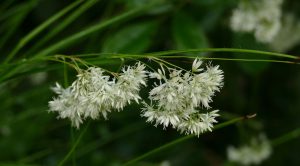Last Updated on April 8, 2024 by Real Men Sow
There are many ornamental types of grass that can be used to cover shady areas in your garden. Here are some of the best ornamental grasses that thrive in shady areas. We’ll list the best grasses for shade that are easy to plant.
Once you decided on the best grass, you can also read more about the best small trees for ornamental gardens.
Interested in grass seeds? We’ve got that covered too.
Best Grasses For Shade in Ornamental Gardens
Luzula nivea (Snow rush)
Like many other grasses, it is resistant to diseases and pests. The evergreen is well-known for its white flowers that are atop long, slender green stems. It is clump-forming and has medium blade widths. It is small and can grow to 30-40 cm at maturity. However, the flower stems can grow up to 60 cm tall. It can grow in either sheltered or open areas and it thrives in full or partial shade. It can be grown in almost all soil types, from poor to fertile, as long as it is well-drained.
Hakonechloa All Gold
This plant, named after its color, is bright yellow with a green base. The tall stems and the bright yellow leaves have a similar appearance to small bamboo. It spreads slowly and gently through rhizomes. This makes it ideal for containers and mixed borders. It only grows to 40 cm. This variety is very hardy and can grow in partial shade, but it can also thrive in full sun with moist humus-rich soil. This variety will die in winter so it is recommended to mulch the soil with compost in autumn.
Ophiopogon planiscapus ‘Nigrescens’ (Black mondo grass)
This black grass is an exceptional ornamental grass for shady areas. This ornamental grass is a visual treat with its black-colored leaves and the light pink flowers that grow up the stems in summer. This plant is great for ground cover and can fill in a shaded area with pink flowers that will truly catch the eye. It will reach a height and width of just about 30 cm when mature.
Uncinia rubra (Red hook sedge)
This compact sedge, also known as the Firedance, is rich in color, and has a bronze-red hue. This mound-shaped grass will add some color to your garden. Its leaves are a unique combination of olive green with a red vertical accent, creating unique clumps. This grass should be planted in partial shade, in a protected area in well-drained soil. It can also thrive in full sunlight, but it needs moist soil.
Carex Ice Dance Grass For Shade
This plant is more popularly known as sedge. The plant blooms between April-July with small flowers, hence, the leaves are the talk about this plant. It is most well-known for its colorful leaves, as with all ornamental grasses. This grass thrives in full or partial shade. It requires moist, well-drained soil. The grass’ thin blades can grow to a maximum height of 10-50 cm and a spread of approximately the same.
Hakonechloa macra (Japanese forest grass)
This ornamental grass is tolerant to shade. It has loose, sloping leaves that move in the wind. There are many colors to choose from, including solid greens and variegated to brighter golds. It can grow to a height of 20-50 cm and spread about the same. It’s easy to grow and requires little maintenance. Because they are so bright, the golden varieties like ‘Aureola” are perfect for planting in shade. It can thrive in both shaded and exposed areas as long as it is in moist but well-drained soils.
Hakonechloa macra Aureola
This can be grown in full or partial shade in well-drained soil. It is an ornamental grass with beautiful yellow and green leaves that turn reddish-tinged in the autumn. Seed heads are produced, making it stand out from other ornamental grasses. It is a slightly smaller variety of grass, only reaching around 20-30 cm in height.
Deschampsia cespitosa (Tufted hair grass)
This plant is also known as tufted hair grass. It produces hair-like green and yellow blades that grow in tufts. It creates clumps that grow low and in dense groups. In summer, there are flowers that cover the leaves in shades of green, yellow, gold and silver. This creates a dash of color above it. They easily attract birds and can withstand air pollution, so you can easily plant them near roads.
You can fill a dull, shady area of your garden with ornamental grass for shade that is simple to maintain, no matter what variety you choose. Do not settle for just one. You can combine and match these ornamentals to create a variety of textures and color to brighten up your garden.


